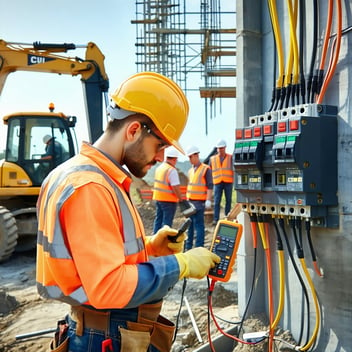Safety is a top priority, no matter how large or small your manufacturing business is. Accidents can happen when you work with large or small hand tools. Therefore, it is essential to follow government regulations while establishing best practices in safety for your manufacturing concern. One seemingly minor accident can be costly to human health and wellbeing or your company’s bottom line. With this in mind, let’s take a look at safety in manufacturing and what it can mean for you, the people working for you, and the community at large.
A Look at the Most Common Safety Hazards in Manufacturing
In any business whatsoever, there will be inherent hazards to some degree. In manufacturing, the leading safety hazards include nonexistent or inefficient:
-
Respiratory protection
-
Machinery and/or guarding on machinery
-
A set hazard communication standard
-
Lockouts
-
Powered industrial vehicles
OSHA, the Occupational Safety and Health Administration, has identified these significant safety hazards within the industry and, in response, has set best practices in safety regulations to be adhered to. The failure to do so may result in severe penalties. Typically, they are fines, but the severity of such offenses may result in a manufacturing company being shut down.
The Reasons Underlying the Need for Workers’ Comp
Again, there will always be hazards in any industry, but by its very nature, manufacturing may result in some of the most life-threatening within all sectors. It is also one of the reasons why workers’ compensation insurance is necessary for any industry and to go without coverage is a major safety violation.
The amount of coverage you are required to carry depends on several factors, of which the degree of risk and outcomes factor heavily. There is no way to set a cost by industry because each company is exposed to the risks mentioned above to greater and lesser degrees. With that said, if you are about to launch a manufacturing company, you can quickly get a worker's compensation insurance quote online. Insurance actuaries set premiums according to the number of risks workers can be exposed to.
OSHA’s 5 Safety Requirements in Manufacturing
OSHA has set best practices in safety that must be strictly adhered to. Five major categories within manufacturing include:
-
Establishing a hazard communication method
-
Setting an Emergency Action Plan
-
Creating a Fire Prevention Plan
-
Posting well-planned emergency exit routes
-
Systems for fall protection
Your manufacturing plant will be regularly inspected, and failure to comply with any of OSHA’s best practices in safety and hazard protection can result in severe penalties.
A Closer Look at Workers’ Compensation
At this point, let’s step back and take a closer look at workers’ compensation. Although safety risks are federally identified, and precautions are mandated, the protections workers’ compensation offers are regulated by the state. Each state governs the amount and limits of coverage, and workers' compensation is, at this time, legally required in all states except Texas. However, that leaves Texas manufacturers liable for potentially huge lawsuits.
A Word to Texas Manufacturing Concerns
Even though Texas does not regulate workers’ compensation and there is no law on the books requiring manufacturers to carry workers’ compensation insurance, going without puts your company at extreme risk. First, look at why workers’ compensation is a legally required insurance coverage in all other states. The reason is obviously because of the inherent risk employees are exposed to on the job.
OSHA has clearly defined these risks and has set best practice guidelines to comply with. Just one injury on the job resulting in lifelong disabilities or death can lead to bankruptcy if not insured. For this reason, it is imperative to weigh the financial and ethical risks of going uninsured. Not only does workers’ comp protect employees, but it protects the very business you have put your resources into. These resources are financial and personal, so it saves you from carrying adequate coverage and those employees depending on you to have their best interests at heart.
Tips for Setting Safety Protocol at Your Plant
There are several ways to ensure that you remain compliant with regulations while also seeing to the health and wellbeing of your employees. Depending on the size of your manufacturing plant, you could assign safety monitors by department or as a company-wide safety director. These employees would be responsible for regular safety checks within their respective departments or the entire plant.
Create a safety checklist they should use to evaluate each of the triggers as identified by OSHA. These employees can also be sent to OSHA-approved training classes for more in-depth safety and hazard prevention education. Some types of liability insurance may offer discounts in premiums for those companies that employ OSHA-certified safety inspectors. Remember that your plant will be inspected regularly by OSHA-approved state inspectors, so having a qualified safety director on staff is a huge benefit.
Your Key Takeaway
The final point you should take away from all this is that safety and hazard protection is a two-way street. By protecting your employees from potential risks, you are watching the business you are running. In manufacturing, the smallest detail left unattended could result in a major loss, which could have easily been avoided if the advice mentioned above had been followed.
You may also want to set your insurance policy limits higher than those mandated by law simply as an extra layer of protection for you, your business, and those who depend on that paycheck to keep food on the table and a roof over their heads. Not only will you benefit financially by protecting your business, but you will also be establishing a company culture that cares for every person on the payroll, no matter how menial their positions. The safety of everyone involved is in your hands, so don’t leave it to OSHA to decide their fate.






Leave a Comment